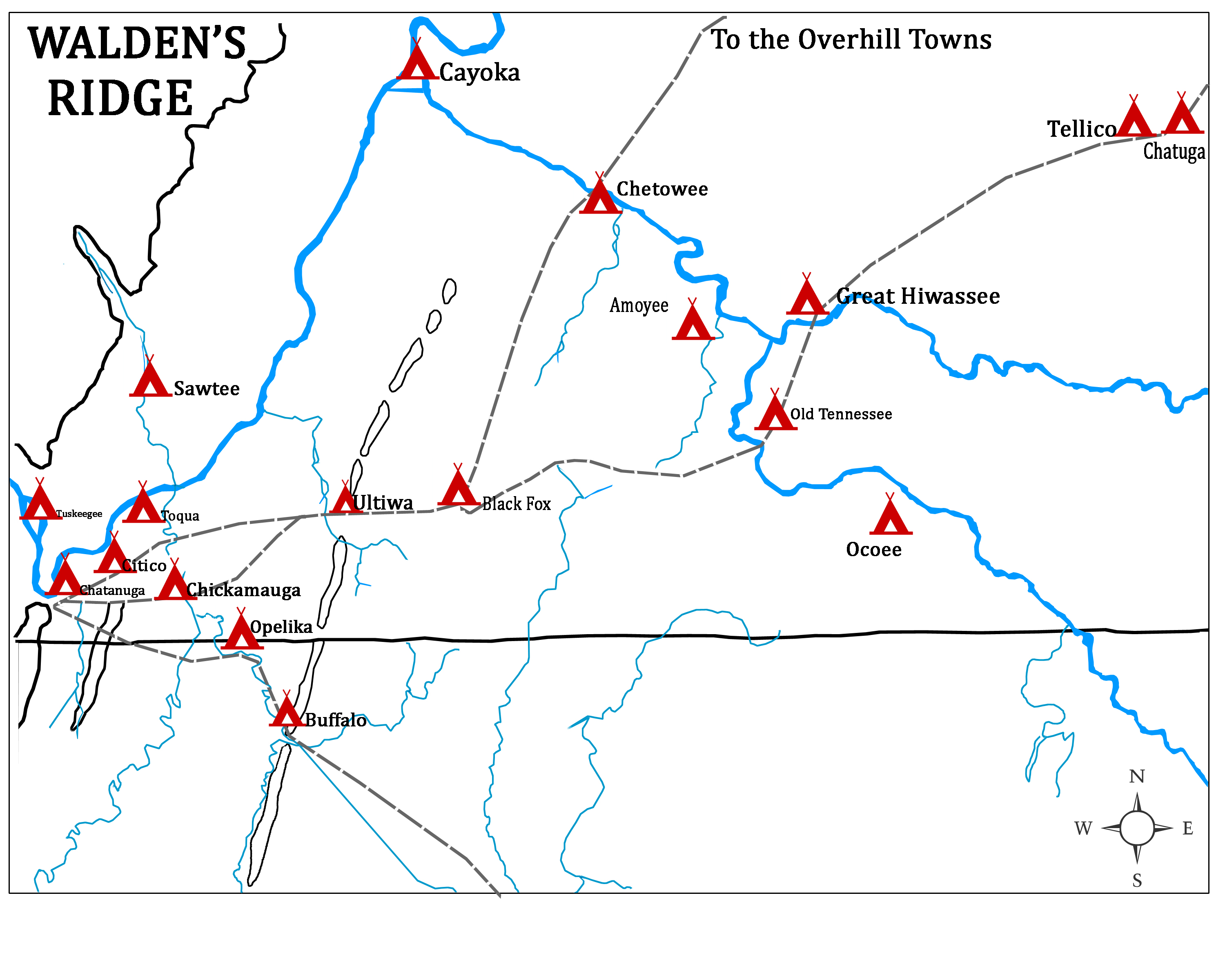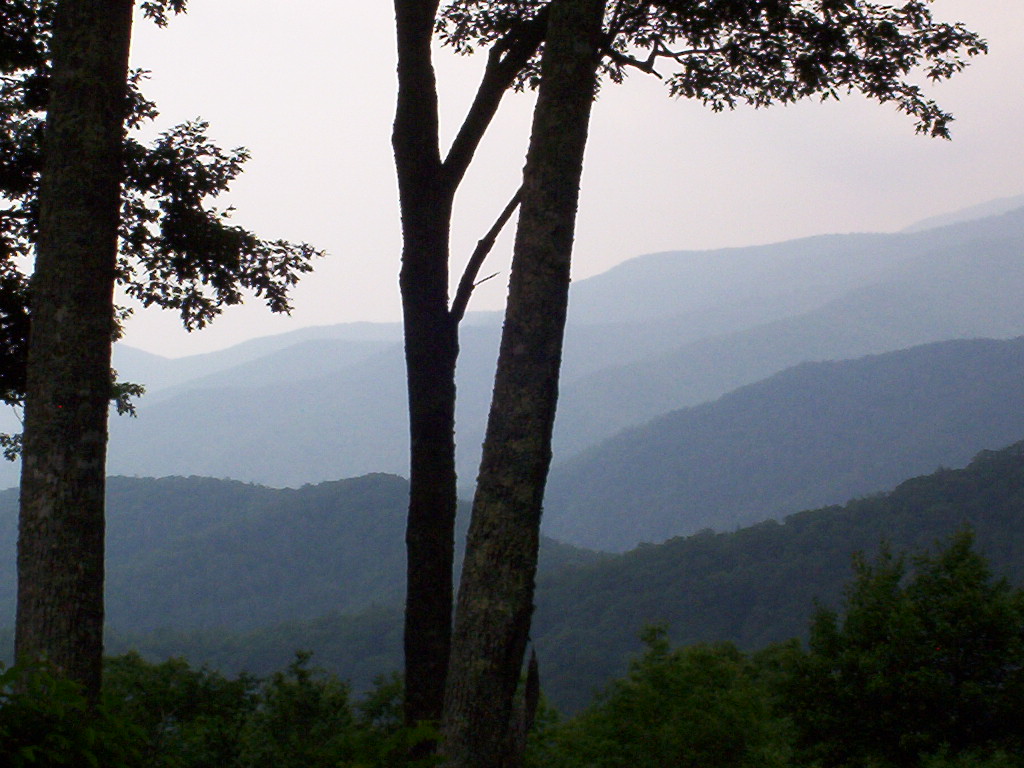|
Sevier County, TN
Sevier County ( ) is a county of the U.S. state of Tennessee. As of the 2020 census, the population was 98,380. Its county seat and largest city is Sevierville. Sevier County comprises the Sevierville, TN Micropolitan Statistical Area, which is included in the Knoxville- Morristown-Sevierville, TN Combined Statistical Area. History Prior to the arrival of white settlers in present-day Sevier County in the mid-18th century, the area had been inhabited for as many as 20,000 years by nomadic and semi-nomadic Native Americans. In the mid-16th century, Spanish expeditions led by Hernando de Soto (1540) and Juan Pardo (1567) passed through what is now Sevier County, reporting that the region was part of the domain of Chiaha, a minor Muskogean chiefdom centered around a village located on a now-submerged island just upstream from modern Douglas Dam. By the late 17th-century, however, the Cherokee, whose ancestors were living in the mountains at the time of the Spaniards' visit, h ... [...More Info...] [...Related Items...] OR: [Wikipedia] [Google] [Baidu] |
John Sevier
John Sevier (September 23, 1745 September 24, 1815) was an American soldier, frontiersman, and politician, and one of the founding fathers of the State of Tennessee. A member of the Democratic-Republican Party, he played a leading role in Tennessee's pre-statehood period, both militarily and politically, and he was elected the state's first governor in 1796. He served as a colonel of the Washington District Regiment in the Battle of Kings Mountain in 1780, and he commanded the frontier militia in dozens of battles against the Cherokee in the 1780s and 1790s.Robert Corlew,John Sevier" ''Tennessee Encyclopedia of History and Culture'', 2009. Retrieved: July 23, 2012. Sevier settled in the Tennessee Valley frontier in the 1770s. In 1776, he was elected one of five magistrates of the Watauga Association and helped defend Fort Watauga against an assault by the Cherokee. At the outbreak of the American Revolutionary War, he was chosen as a member of the Committee of Safety (American R ... [...More Info...] [...Related Items...] OR: [Wikipedia] [Google] [Baidu] |
Chickamauga Cherokee
The Chickamauga Cherokee is a Native American group who separated from the Cherokee from the American Revolutionary War to the early 1800s. Most of the Cherokee people signed peace treaties with the Americans in 1776-1777, after the Second Cherokee War. Followers of the skiagusta (war chief) Dragging Canoe moved with him down the Tennessee River, away from their historic Overhill Cherokee towns. Relocated to a more isolated area, they established 11 new towns to distance themselves from encroaching colonists. Frontier Americans associated Dragging Canoe and his band with their new town on Chickamauga Creek, and began to refer to the band as the Chickamaugas. The Chickamauga moved further west and southwest into present-day Alabama five years later, establishing five larger settlements. They were then more commonly known as the Lower Cherokee, a term closely associated with the people of the five lower towns. Dragging Canoe, the first Chicamauga chief, separated from the Upp ... [...More Info...] [...Related Items...] OR: [Wikipedia] [Google] [Baidu] |
Mount Le Conte (Tennessee)
Mount Le Conte (or LeConte) is a mountain located within the Great Smoky Mountains National Park in Sevier County, Tennessee. At it is the third highest peak in the national park, behind Kuwohi (formerly Clingmans Dome) () and Mount Guyot (Great Smoky Mountains), Mount Guyot (). It is also the highest peak that is completely within Tennessee. From its immediate base to its summit, Mount Le Conte is the mountain with the highest relief east of the Rocky Mountains, rising from its base, near Gatlinburg, Tennessee (elevation ). For comparison, 1980 eruption of Mount St. Helens, Pre-1980 Mount St. Helens in Washington (state), Washington was roughly above its base. There are four subpeaks above on the mountain (referred to as the LeConte massif): West Point (), High Top (), Cliff Tops (), and Myrtle Point (). In addition, Balsam Point, with an elevation above , serves as the dramatic west end of the massif. Mount Le Conte has the highest inn that provides lodging for visitors ... [...More Info...] [...Related Items...] OR: [Wikipedia] [Google] [Baidu] |
Mount Guyot (Great Smoky Mountains)
Mount Guyot is a mountain in the Great Smoky Mountains, located in the southeastern United States. At in elevation, Guyot is the fourth-highest summit in the Eastern United States, Eastern U.S., and the second-highest in the Great Smoky Mountains National Park. While the mountain is remote, the Appalachian Trail crosses its south slope, passing to within of the summit. Mount Guyot lies on the Tennessee-North Carolina border, between Sevier County, Tennessee, Sevier County and Haywood County, North Carolina, Haywood County. There are two peaks atop the mountain approximately one-half mile apart, with the southwestern peak in Tennessee being the true summit. The mountain rises above its eastern base near Walnut Bottom and above its western base near Greenbrier (Great Smoky Mountains), Greenbrier Cove. Ramsey Cascades, one of the park's most spectacular waterfalls, spills down a sandstone cliff near the bottom of Guyot's western slope. A dense stand of Southern Appalachian ... [...More Info...] [...Related Items...] OR: [Wikipedia] [Google] [Baidu] |
Kuwohi
Kuwohi (, also known as Clingmans Dome, its former official name) is a mountain in the Great Smoky Mountains of Tennessee and North Carolina in the Southeastern United States. At an topographical summit, elevation of , it is the highest mountain in the Great Smoky Mountains National Park, the highest point in the state of Tennessee, and the highest point along the Appalachian Trail. It is also the third highest point in eastern mainland North America, after Mount Mitchell () and Mount Craig (North Carolina), Mount Craig (). Description Kuwohi has two subpeaks: Mount Buckley to the west and Mount Love to the east. The headwaters of several substantial streams are located on the slopes of Kuwohi, including Little River (Tennessee), Little River on the north slope, and Forney Creek and Noland Creek, both of which are tributaries of the Tuckasegee River, on the south slope. The mountain is located entirely within the Tennessee Valley, watershed of the Tennessee River.National Par ... [...More Info...] [...Related Items...] OR: [Wikipedia] [Google] [Baidu] |
Ridge-and-Valley Appalachians
The Ridge-and-Valley Appalachians, also called the Ridge and Valley Province or the Valley and Ridge Appalachians, are a physiographic province of the larger Appalachian Highlands division. The physiographic province is divided into three sections: the Hudson Valley, the Central, and the Tennessee. The river valleys were areas of indigenous settlements for thousands of years. In the historic period, the Cherokee people had towns along many of the rivers in western South Carolina and North Carolina, as well as on the western side of the Appalachian Mountains in present-day Tennessee. Similarly, the Catawba people occupied areas along the upper Catawba River in Western North Carolina, to the east of Cherokee County. The ridge and valley system presents an important obstacle to east–west land travel even with today's technology. It was a nearly insurmountable barrier to European-American migrants who walked or rode horses traveling west to settle the Ohio Country, and ... [...More Info...] [...Related Items...] OR: [Wikipedia] [Google] [Baidu] |
Great Smoky Mountains
The Great Smoky Mountains (, ''Equa Dutsusdu Dodalv'') are a mountain range rising along the Tennessee–North Carolina border in the southeastern United States. They are a subrange of the Appalachian Mountains and form part of the Blue Ridge Physiographic Province. The range is sometimes called the Smoky Mountains, and the name is commonly shortened to the Smokies. The Smokies are best known as the home of the Great Smoky Mountains National Park, which protects most of the range. The park was established in 1934 and, with over 11 million visits per year, is the most visited national park in the United States. The Smokies are part of an International Biosphere Reserve. The range is home to an estimated of old-growth forest, constituting the largest such stand east of the Mississippi River. The coves hardwood forests in the range's lower elevations are among the most diverse ecosystems in North America, and the Southern Appalachian spruce–fir forest that covers the upper ... [...More Info...] [...Related Items...] OR: [Wikipedia] [Google] [Baidu] |
Sunset At Clingmans Dome
Sunset (or sundown) is the disappearance of the Sun at the end of the Sun path, below the horizon of the Earth (or any other astronomical object in the Solar System) due to its rotation. As viewed from everywhere on Earth, it is a phenomenon that happens approximately once every 24 hours, except in areas close to the poles. The equinox Sun sets due west at the moment of both the spring and autumn equinoxes. As viewed from the Northern Hemisphere, the Sun sets to the northwest (or not at all) in the spring and summer, and to the southwest in the autumn and winter; these seasons are reversed for the Southern Hemisphere. The sunset is defined in astronomy the moment the upper limb of the Sun disappears below the horizon. Near the horizon, atmospheric refraction causes sunlight rays to be distorted to such an extent that geometrically the solar disk is already about one diameter below the horizon when a sunset is observed. Sunset is distinct from twilight, which is divided into thr ... [...More Info...] [...Related Items...] OR: [Wikipedia] [Google] [Baidu] |
Great Smoky Mountains National Park
Great Smoky Mountains National Park is a List of national parks of the United States, national park of the United States in the southeastern United States, southeast, with parts in North Carolina and Tennessee. The park straddles the ridgeline of the Great Smoky Mountains, part of the Blue Ridge Mountains and part of the Appalachian temperate rainforest, which are a division of the larger Appalachian Mountains, Appalachian Mountain chain. The park contains some of the highest mountains in eastern North America, including Kuwohi, Mount Guyot (Great Smoky Mountains), Mount Guyot, and Mount Le Conte (Tennessee), Mount Le Conte. The border between the two states runs northeast to southwest through the center of the park. The Appalachian Trail passes through the center of the park on its route from Georgia (U.S. state), Georgia to Maine. With 13 million visitors in 2023, the Great Smoky Mountains National Park is the most visited national park in the United States. The park encompass ... [...More Info...] [...Related Items...] OR: [Wikipedia] [Google] [Baidu] |
Subsistence Agriculture
Subsistence agriculture occurs when farmers grow crops on smallholdings to meet the needs of themselves and their families. Subsistence agriculturalists target farm output for survival and for mostly local requirements. Planting decisions occur principally with an eye toward what the family will need during the coming year, and only secondarily toward market prices. Tony Waters, a professor of sociology, defines "subsistence peasants" as "people who grow what they eat, build their own houses, and live without regularly making purchases in the marketplace". Despite the self-sufficiency in subsistence farming, most subsistence farmers also participate in trade to some degree. Although their amount of trade as measured in cash is less than that of consumers in countries with modern complex markets, they use these markets mainly to obtain goods, not to generate income for food; these goods are typically not necessary for survival and may include sugar, iron roofing-sheets, bicycle ... [...More Info...] [...Related Items...] OR: [Wikipedia] [Google] [Baidu] |
East Tennessee Bridge-burning Conspiracy
The East Tennessee bridge burnings were a series of guerrilla operations carried out during the American Civil War by Southern Unionists in Confederate-held East Tennessee in 1861. The operations, planned by Carter County minister William B. Carter and authorized by President Abraham Lincoln, called for the destruction of nine strategic railroad bridges, followed by an invasion of the area by Union Army forces then in southeastern Kentucky. The conspirators managed to destroy five of the nine targeted bridges, but the Union Army failed to move, and would not invade East Tennessee until 1863, nearly two years after the incident. The destruction of the bridges, all of which were quickly rebuilt, had almost no military impact. However, the attacks caused a shift in the way the Confederate authorities regarded East Tennessee's Union sympathizers. Parts of the area were placed under martial law, and dozens of known Unionists were arrested and jailed. Several suspected bridge burner ... [...More Info...] [...Related Items...] OR: [Wikipedia] [Google] [Baidu] |
Strawberry Plains, Tennessee
Strawberry Plains is an unincorporated community and census-designated place (CDP) in Jefferson, Knox, and Sevier counties in the State of Tennessee, United States. Before 2010, it was treated by the United States Census Bureau as a census county division. It is included in both the Knoxville Metropolitan Statistical Area and the Morristown Metropolitan Statistical Area. The population of the CDP, which only covers the Jefferson County portion of the community, was 2,405 at the 2020 census. History The community that would become Strawberry Plains would be settled in 1785 by Adam Meek, a pioneer from North Carolina who would first settle in nearby Rocky Valley, and the first established settlement of newly founded Jefferson County. Meek would resettle near the banks of the Holston River in present-day Strawberry Plains following conflicts with inhabiting Native Americans. Strawberry Plains is said to be named for the wild strawberries that grew there in abundance when ... [...More Info...] [...Related Items...] OR: [Wikipedia] [Google] [Baidu] |







